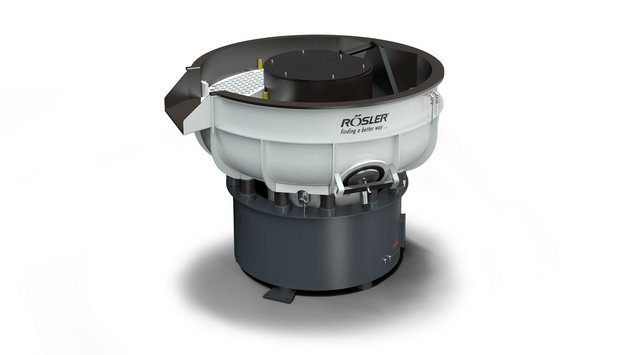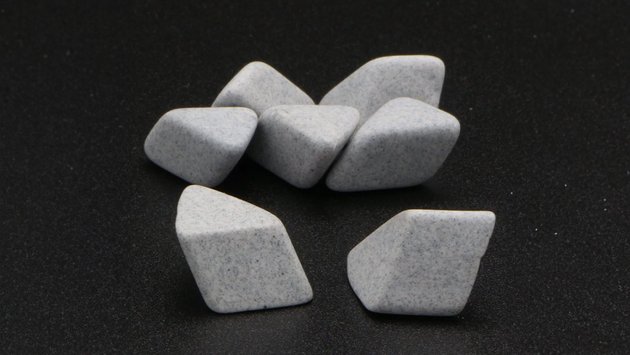
Media plays an essential role within a mass finishing process. Whether ceramic, plastic, if polishing or drying, optimal media mix and conditions must be maintained to produce precise finishing results.
“Glazing” occurs when the surface of the media becomes contaminated with metal fines and other debris from the work pieces. As a result, the media becomes very shiny and frequently looks like a piece of aluminum, brass, steel, zinc, etc.
Because glazed media completely loses its original surface properties, it no longer has any grinding effect. Instead, glazed media creates a sort of uncontrolled burnishing. It also retains dirt and other particles which are then deposited on the work pieces.
The image above depicts (from left) media states include clean, heavily glazed, partially cleaned, and fully cleaned.
Rösler has more than 60 years of media production experience. In that time we’ve seen—and corrected—countless examples of ineffective surface finishing as a result of media glazing.
Causes of Glazing

There are multiple issues that can result in glazing. The most common problems include:
- Poor media working mix—Media which is too much small or undersized can clog machine drains. This prevents the “dirty” process water from being discharged and contaminating or coating the media with metal residue.
- Low water flow—If the water flow into the machine is not adequate, contaminants including metal and media fines, oil, and dirt may not be fully flushed from the system.
- Inadequate compound concentration—Poor cleaning effect on the media and work piece may result if the compound concentration is too low.
- Wrong compound—Utilizing a compound designed for the specific work piece materials, process goals, and water conditions is essential to avoid glazing caused by ill-suited compounds.
Preventing Glazing

Media glazing can be prevented by carefully calibrating processes and monitoring conditions for issues. Close attention should be paid to:
- Maintaining an optimum media working mix. This requires ensuring that all undersized media is cycled out and replaced with new media.
- Providing a sufficient process water flow to facilitate proper cycling.
- Making sure that the machine drains are open and clear to prevent clogs and sediment retention.
- Selecting the right compound and injecting it in the right concentration (typically 0.7-1% by volume of water).
Important fact: The water volume and compound concentration must match the machine size. A good rule of thumb is 1 oz/hr of compound per 1 gal/hr of water per 1 cu ft of usable machine volume. Adjustments up or down might be necessary based on your process.
Restoring Media

In some cases, the effectiveness of glazed media may be restored. Adding an abrasive powder to the media, such as Rösler R 55 cleaning powder, and running the machine for a few hours can remove the glazing.
This method is especially useful when a large amount or a costly type of media has been rendered useless. Cleaning the media with a powder is more cost effective than completely replacing the entire media mix.
With a ratio of 2 lbs powder per 100 lbs of media, adding cleaner is an efficient way to recover from media glazing.



